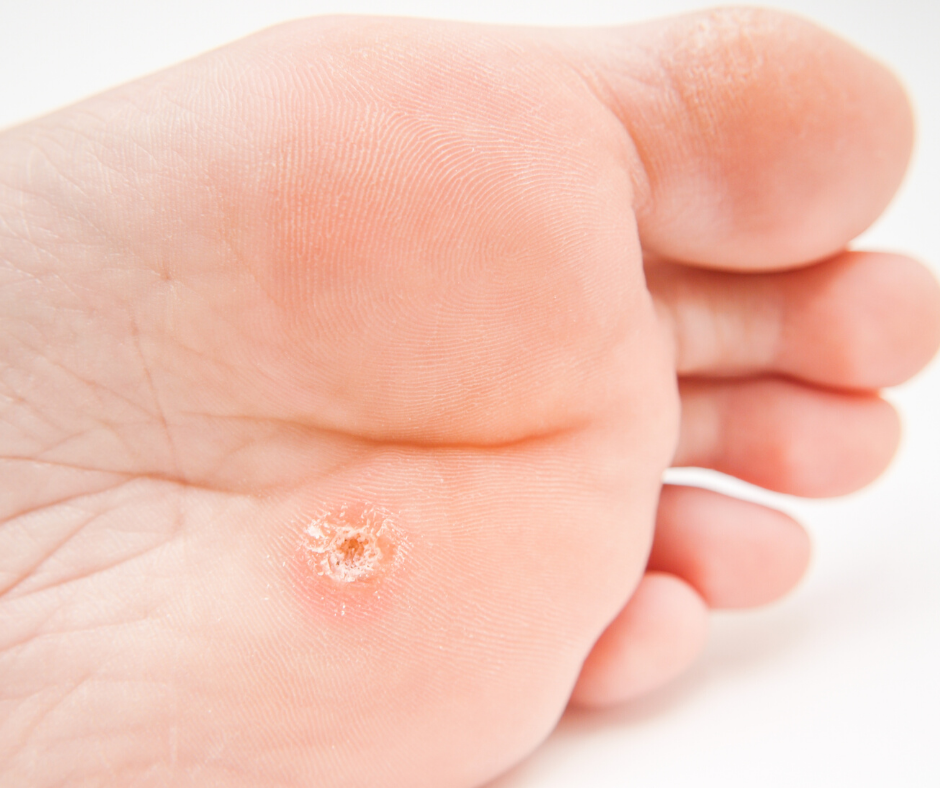
 Corns, calluses and cracked heels are three common problems that we have the privilege of helping our patients with on a daily basis here at My FootDr. Unfortunately, they’re often a problem that many ignore in the hopes that they’ll go away on their own – whereas they may actually worsen if left untreated. The good news is that easing discomfort from these conditions can be simple and easy – and completed in one appointment. Today, the My FootDr team is sharing why you may be developing each of these problems, how you can treat them today, and what you can do to prevent them from recurring in the future.
Corns, calluses and cracked heels are three common problems that we have the privilege of helping our patients with on a daily basis here at My FootDr. Unfortunately, they’re often a problem that many ignore in the hopes that they’ll go away on their own – whereas they may actually worsen if left untreated. The good news is that easing discomfort from these conditions can be simple and easy – and completed in one appointment. Today, the My FootDr team is sharing why you may be developing each of these problems, how you can treat them today, and what you can do to prevent them from recurring in the future.
So, what causes corns, calluses and cracked heels to develop?
The primary cause of calluses and corns is pressure and friction. When an area of the skin on the feet is exposed to repetitive rubbing or excess pressure, often from walking or tight footwear, the skin begins to harden in response. This is actually a protective mechanism to prevent breaks in the skin. Of course, other factors can contribute to the pressure including:
 Prominent bones in the feet
Prominent bones in the feet- The biomechanical functioning of your feet
- Your footwear
- The surfaces you walk on
- The amount and kind of exercise you’re doing
While a callus is a wider area of hard skin that builds up on weight-bearing areas of the feet, corns are better described as small pinpoints of pressure where the hard skin goes deeper in an almost conical shape. This can make it feel like you’re walking on a pebble – and be very painful! Both corns and callus can vary in size and thickness which is directly related to the amount of pressure that they are exposed to.
Cracked heels develop from thick callus that dries out, cracking the hard skin. As callus is dead skin without any nerve endings, cracks in the callus itself are not typically painful. Unfortunately, the cracks may also reach the healthy living skin beneath, causing pain and bleeding at the fissure.
How are corns, calluses and cracked heels treated?
 Treating these problems is extremely common for our podiatry team and we are able to reduce your callus and cracked heels, while scooping out your corns safely and painlessly in one appointment.
Treating these problems is extremely common for our podiatry team and we are able to reduce your callus and cracked heels, while scooping out your corns safely and painlessly in one appointment.
We do this using the right podiatric instruments, including sanding discs and scalpel blades, to remove the dead skin. It is extremely important to not attempt this yourself as there is a fine line between your healthy, living skin that will bleed easily, and the corns, callus and cracked heels. It’s also why corn pads are not recommended – these use an acid to eat away at the skin and soften it. Unfortunately, the acid doesn’t differentiate between the dead skin and the healthy surrounding skin that it can leak out onto, which may leave you in more pain than when you started.
The result from our treatment is instant relief when you place your feet on the ground, greater comfort in your shoes and during walking, and smoother, softer skin.
How do I prevent corns, calluses and cracked heels from coming back?
 The key to either preventing them from recurring or reducing the rate at which they recur is to address their cause. This may involve changing the footwear that has been rubbing against the sides of your feet, adding cushioning to your feet when you train on hard surfaces, using orthotics to help with your foot biomechanics so you don’t overload certain areas of your feet as much, and more.
The key to either preventing them from recurring or reducing the rate at which they recur is to address their cause. This may involve changing the footwear that has been rubbing against the sides of your feet, adding cushioning to your feet when you train on hard surfaces, using orthotics to help with your foot biomechanics so you don’t overload certain areas of your feet as much, and more.
During your appointment to treat your skin problems, your My FootDr podiatrist will also discuss the reasons that the problems may have formed, and work out a plan to help prevent them from being an ongoing problem in the future.
Ready to feel great on your feet again?
To book in with our fantastic podiatry team, give us a call on 1800 FOOT DR or book your appointment online here.


